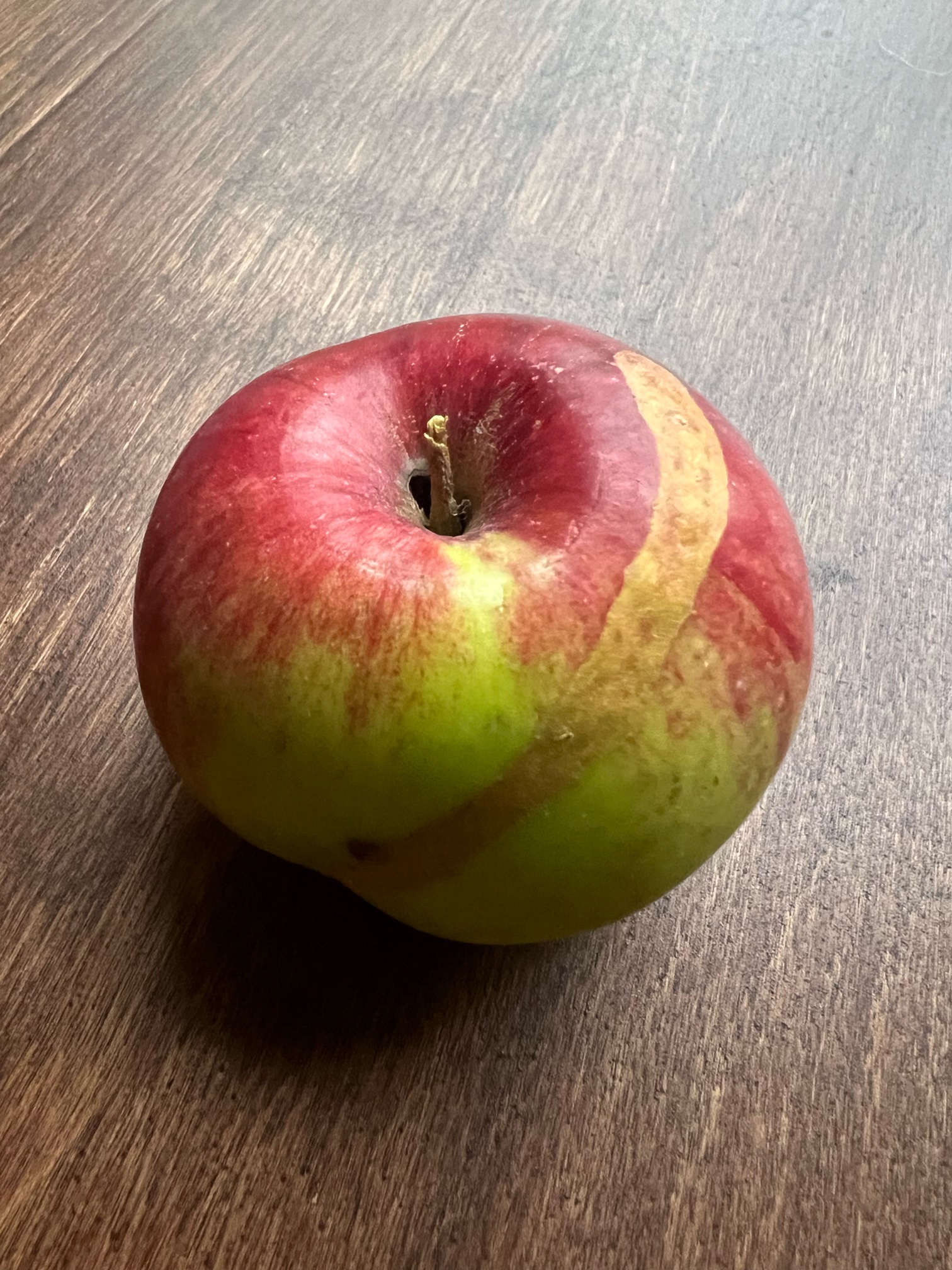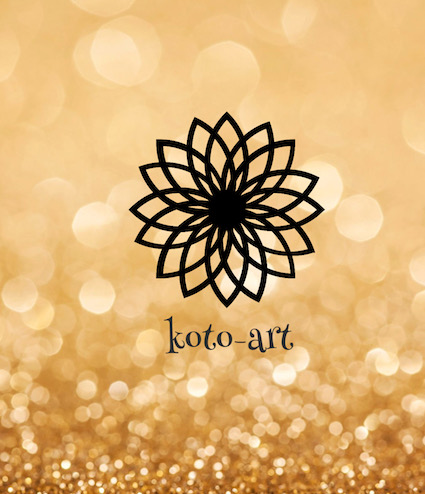
Kintsugi Apple
I eat apples every day and love selecting them at farmers' markets or local supermarkets. With so many varieties available, I want to try as many types as possible. My favorites are Gala, Honeycrisp, and Fuji apples. I prefer apples that are not too tart or spicy.
In my garden, there are a few apple trees. One of them produces nice apples, though I'm not sure of the variety. Possibly McIntosh? These apples are quite sour, so I often use them in sauces or desserts.

Looking at this particular apple reminds me of Kintsugi, the traditional Japanese art of repair. In Kintsugi, broken or cracked pottery is mended with lacquer dusted or mixed with powdered gold and more. Rather than hiding the damage, Kintsugi celebrates it, creating something unique and even more beautiful from what was once broken.
This apple isn’t wounded in the same way, but it bears small dents and nibbles from insects, forming a natural pattern that resembles the elegance of Kintsugi. The small imperfections give it character, just as in the Kintsugi philosophy of embracing flaws and history. This approach to beauty reflects a deeply Japanese mindset like respecting and preserving things for as long as possible.
I still have this "Kintsugi apple" in my fridge, and I can't bring myself to peel away its natural beauty just yet. But one day soon, I’ll enjoy it, honoring both its appearance and its taste.

Japanese 日本語

金継ぎりんご
毎日りんごを食べます。たいてい、近所の農場マーケットやスーパーでりんごを買います。けっこうな種類が陳列されているので、なるべくいろいろな味を試すようにしています。中でも好みの味はガラ、ハニークリスプとふじりんごです。りんごはあまり酸っぱくない方が好みです。
家の庭にはいくつかりんごの木があります。そのうちの1本はきちんとりんごが実ります。ただ、そのりんごの木の種類がわからないのです。おそらくマッキントッシュでしょうか?ちょっと酸っぱいのでソースやデザートを作るのに使います。

このりんごは金継ぎを思い出させてくれるような模様が入っています。破損したりヒビが入った焼き物を金粉などを使って修繕する技術が素晴らしいと思います。傷を隠すのではなく、その傷を慈しむかのような技法が素敵です。
庭で採れたこのりんごはひどい傷ものではないのですが、ダメージやちょっとした虫食いがあります。そして、金継ぎのようにきれいにラインが入っているところに味があります。完璧ではない小さなりんごが金継ぎの概念のようで美しく見えます。古いものを尊重し、修繕しながら手入れを加えて長年使用することに美を見出す日本の文化である金継ぎに魅せられます。
実はこの金継ぎりんご、まだもったいなくて食べられていません。皮を剥いてしまうと金継ぎの部分がなくなってしまうので、しばらく冷蔵庫の中で保管しています。もう時期、食べることにします。
Thank you for reading!
お読みいただきありがとうございます。

I never thought of that, but it is a little like kintsugi. I like your observation!
I always prefer well-worn things. Coins or leather with a patina, old metal things that are all scratched up and well used, old gloves that are stitched and repaired and now bend in strange ways when you lay them on the ground, but still work well. I rarely buy cases with my phones, for instance, for this reason. I want them to get scratched up in my pocket. It adds a character and a life to the objects.
Er... sorry, that wasn't really about the apple, was it? haha. I'd do the same as you with that apple: admire it for awhile, but then enjoy eating it.
Oh, I understand that you like your belongings to have character. I think it's called "Aji," right? I love when my boots and sneakers become easier to wear and develop "Aji," but I don't like them to be dirty. Do you get what I mean? I love seeing long histories through nature or objects, like you said. However, I don’t feel good about things that turn into "gomiyashiki." Kintsugi is such a cool technique!